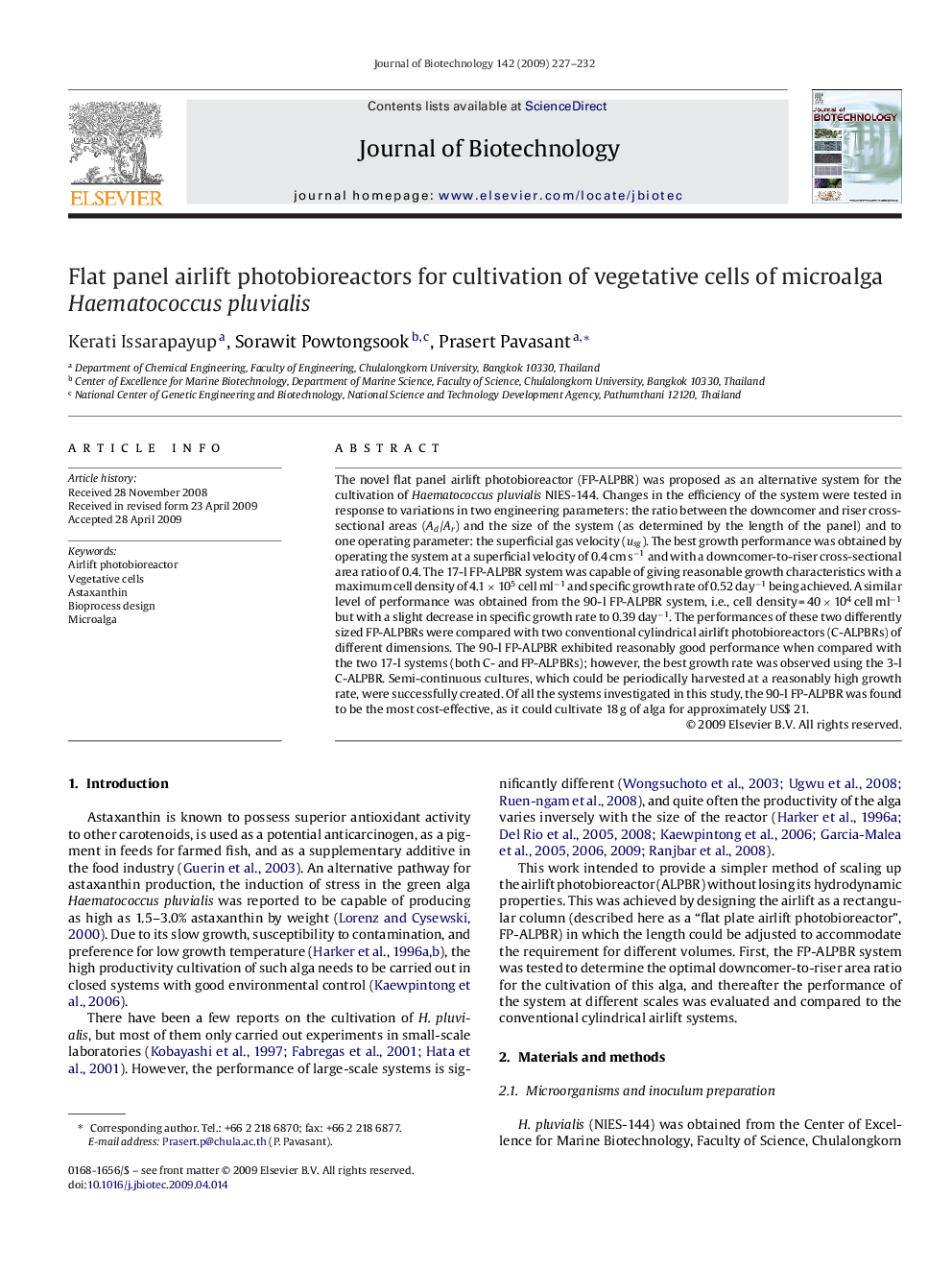| کد مقاله | کد نشریه | سال انتشار | مقاله انگلیسی | نسخه تمام متن |
|---|---|---|---|---|
| 24544 | 43525 | 2009 | 6 صفحه PDF | دانلود رایگان |

The novel flat panel airlift photobioreactor (FP-ALPBR) was proposed as an alternative system for the cultivation of Haematococcus pluvialis NIES-144. Changes in the efficiency of the system were tested in response to variations in two engineering parameters: the ratio between the downcomer and riser cross-sectional areas (Ad/Ar) and the size of the system (as determined by the length of the panel) and to one operating parameter: the superficial gas velocity (usg). The best growth performance was obtained by operating the system at a superficial velocity of 0.4 cm s−1 and with a downcomer-to-riser cross-sectional area ratio of 0.4. The 17-l FP-ALPBR system was capable of giving reasonable growth characteristics with a maximum cell density of 4.1 × 105 cell ml−1 and specific growth rate of 0.52 day−1 being achieved. A similar level of performance was obtained from the 90-l FP-ALPBR system, i.e., cell density = 40 × 104 cell ml−1 but with a slight decrease in specific growth rate to 0.39 day−1. The performances of these two differently sized FP-ALPBRs were compared with two conventional cylindrical airlift photobioreactors (C-ALPBRs) of different dimensions. The 90-l FP-ALPBR exhibited reasonably good performance when compared with the two 17-l systems (both C- and FP-ALPBRs); however, the best growth rate was observed using the 3-l C-ALPBR. Semi-continuous cultures, which could be periodically harvested at a reasonably high growth rate, were successfully created. Of all the systems investigated in this study, the 90-l FP-ALPBR was found to be the most cost-effective, as it could cultivate 18 g of alga for approximately US$ 21.
Journal: Journal of Biotechnology - Volume 142, Issues 3–4, 15 July 2009, Pages 227–232